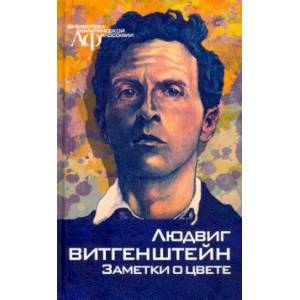Fairy notes
Please sign in so that we can notify you about a reply
Ludwig Wittgenstein (1889-1951), Austro-English philosopher, one of the founders of analytical philosophy and one of the brightest thinkers of the 20th century. He studied engineering in Berlin and Manchester (1906-1911) In 1911-1913 Under the leadership of B. Russell, he studies and works at the University of Cambridge, becoming interested in the ideas of modern logic and the philosophy of mathematics. In 1914-1918 Participates in the First World War. After the war and captivity, he departs from philosophy and teaches in a rural school. By philosophy, he returns to classes in the late 1920s under the influence of discussion of his ideas by representatives of the Vienna circle. In 1929 he received a doctoral degree in Cambridge and is elected a member of the Trinity College. From 1939 to 1947 He holds a professor at Cambridge University.
In Wittgenstein philosophy, two periods are distinguished. In the early works, mainly in the "Logical and Philosophical Treatise" (1921), he innovatively applies modern mathematical logic to traditional philosophical problems, having a significant impact on the formation of the philosophy of logical atomism and logical positivism. Since the 30s, he has been addressing a study of various linguistic practices. Ideas about the nature of the language, set forth in "philosophical research" (1953) and other works of this period, largely laid the foundation in the foundation of modern analytical philosophy.
"Notes on color" dates back to the late period of Ludwig Wittgenstein’s work and are posthumously published manuscripts, the content of which is mainly devoted to the logic of color concepts and its linguistic and sociocultural conditioning. Traditional philosophical issues relating to the nature of visual perception are considered here from the point of view of the Late Wittgenstein, important for the philosophy of late Wittgenstein: meaning as use, linguistic games, life forms. A significant part of the notes is devoted to criticism of the established theories and ideas about the perception of color, repelled from its physical and mental nature. A special place is given to the sociocultural context of the functioning of language expressions used to describe color phenomena.
For philosophers, psychologists, linguists, art historians
In Wittgenstein philosophy, two periods are distinguished. In the early works, mainly in the "Logical and Philosophical Treatise" (1921), he innovatively applies modern mathematical logic to traditional philosophical problems, having a significant impact on the formation of the philosophy of logical atomism and logical positivism. Since the 30s, he has been addressing a study of various linguistic practices. Ideas about the nature of the language, set forth in "philosophical research" (1953) and other works of this period, largely laid the foundation in the foundation of modern analytical philosophy.
"Notes on color" dates back to the late period of Ludwig Wittgenstein’s work and are posthumously published manuscripts, the content of which is mainly devoted to the logic of color concepts and its linguistic and sociocultural conditioning. Traditional philosophical issues relating to the nature of visual perception are considered here from the point of view of the Late Wittgenstein, important for the philosophy of late Wittgenstein: meaning as use, linguistic games, life forms. A significant part of the notes is devoted to criticism of the established theories and ideas about the perception of color, repelled from its physical and mental nature. A special place is given to the sociocultural context of the functioning of language expressions used to describe color phenomena.
For philosophers, psychologists, linguists, art historians
Author:
Author:Wittgenstein Ludwig
Cover:
Cover:Hard
Category:
- Category:Politics & Social Science
- Category:Phylosophy
- Category:Reference books
Series:
Series: Library of analytical philosophy
ISBN:
ISBN:978-5-88373-710-6
No reviews found
